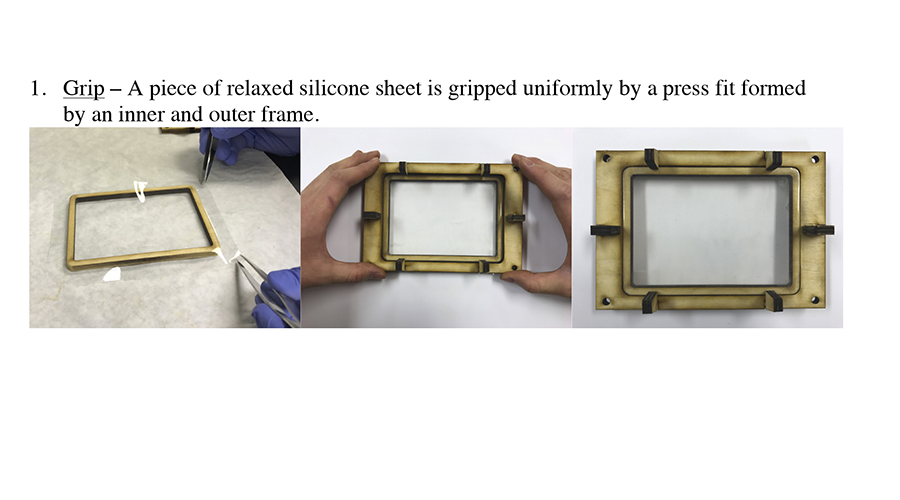Well Plate AssemblyNorthwestern undergraduates partner with NorthShore University Health System to make a positive impact in a medical research environment.
Introduction
A team of Northwestern Engineering students enrolled in a two-quarter sequence called DSGN 384: Interdisciplinary Design Projects partnered with Dr. John Finan at the Department of Neurosurgery at the NorthShore University Health System. Professors Dan Brown and John Anderson taught the course sequence and mentored the team while providing technical expertise throughout the process.
In his lab, Dr. Finan has developed a 96 well system that allows him to mechanically subject human neurons to shock in order to simulate traumatic brain injuries. The purpose of this system is to allow them to test thousands of compounds rapidly to discover drug candidates that protect neurons from mechanical insult. Dr. Finan’s team assembles the well plates themselves using a custom-designed clamp to bond the well plate body to a transparent silicone sheet. However, the process had a flaw: the silicone was slack when they bonded it, causing variable waviness in the initial geometry of the plate.
The challenge issued by Dr. Finan to this DSGN 384 student team was to design a method for pre-tensioning the sheet of silicone before it is bonded to the 96 well plate body in order to reduce the frequency of dimples. Ultimately, this improvement would mean the well plate assembly would produce better data.
Problem
In his lab at the NorthShore University Health System, Dr. Finan has been working on a novel method of inducing injury to neurons to simulate trauma to the brain and as part of that method a multi-step process is used to create a 96 well plate assembly with a unique silicone-lined bottom. However, the silicone sheet does not adhere to the well plate with a consistent flatness. Instead, the silicone dimples, which introduces error into the imaging of the cells.
Solution
The student team decided to focus on pre-tensioning the silicone before it mates with the well plate using a 3-step tension frame: grip, tension, contact (detailed below). Through patent research, user observation, journey mapping, and prototyping, the team worked to ultimately reduce the dimples in the silicone by replacing the part of the process in which the operator lifts the activated silicone with a new process: by placing the silicone in the frame, pre-tensioning it, and putting the frame in the plasma cleaner, you eliminate the need to handle the silicone sheet at all. The frame consistently holds the silicone sheet flat and taut throughout the entire assembly process.
This final prototype is ready to be used Dr. Finan’s lab, is safe to use in the plasma cleaner and prepares a well-plate assembly that reduces dimples in the silicone lined bottom reducing the average number of failed wells in each plate by a factor of 3.5. The student team maintained the existing process of Dr. Finan’s research, incorporating the clamp and the plasma cleaning, for example. By maintaining the existing process in this way, the student team minimized disruption.
Current Status
The student team has completed their two-quarter sequence of DSGN 384. While they have achieved a better plate with less dimpling through their design, they have not yet been able to firmly quantify the success of the well plate lined with silicone using their method. Dr. Finan was able to complete a test run on plates using the lab’s previous process and compare it with plates using the process designed by the student team, and the results indicated that the students’ process yielded fewer errors. Improvement will need to be measured with better validation in the future.
“A flatter plate means better focus in our microscopic images, which means more insight into how the cells are responding to injury,” said Dr. Finan. “The Segal students have made a lasting improvement in our system that will strengthen every data set we acquire in the future.”
ProgramsSegal Design Certificate, Manufacturing and Design Engineering (MaDE)
Faculty AdvisersJohn Anderson, Dan Brown




